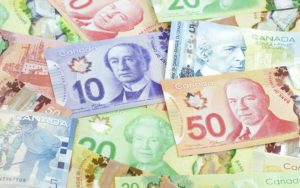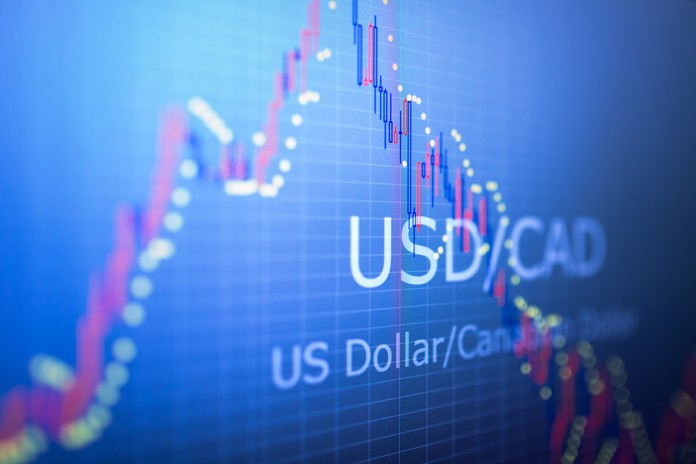

USD to CAD Live Trading Room:
- About the Live Trading Room
- Live Forex Calendar
- Live Exchange Rate and Chart
- Technical Analysis
- The Most Trusted Forex Brokers for Trading USD/CAD
About the Live Trading Room
The USD/CAD currency pair tells the trader how many Canadian dollars (which would be the quote currency) are needed to purchase a U.S. dollar (in this case, the base currency of the currency pair). The USD/CAD currency pair is known as the “Loonie”. The nickname is derived from the picture of a loon, a distinctive bird that appears on one side of Canada’s gold-coloured, one dollar coin.
The USD/CAD is one of the so-called “commodity pairs”, together with AUD/USD, NZD/USD currency pairs, highly correlated to commodity fluctuations (especially oil).
Canada is known as a resource-based economy being a large producer and supplier of oil. Canada’s leading export market is by far the United States making its currency particularly sensitive to U.S. consumption data and economic health.
Assets that influence USD/CAD the most are:
- Commodities: oil but also gold and natural gas should be taken into account.
- Currencies: JPY and EUR. This group also includes EUR/USD, GBP/USD, USD/JPY, AUD/USD, USD/CHF, NZD/USD, GBP/JPY and EUR/JPY.
- Bonds: CSB (Canada Savings Bonds), CPB (Canada Premium Bond).
- Indices: S&P/TSX Capped Composite Index (the headline index for the Canadian equity market), S&P/TSX Global Gold Index (index of global gold securities) and S&P/TSX Capped Energy Index (benchmarks for related derivative products of Canadian economic sectors).
Live USD/CAD Forex Calendar
In Canada, the people and organizations that influence the most the moves of the USD/CAD pair are:
- Bank of Canada (BoC), Canada’s Central bank, promotes a safe and sound financial system within the country, issuing statements and deciding on its interest rates. Bank of Canada’s president is Tiff Macklem.
- Canadian Government and Canada’s Department of Finance that implement policies that affect the country’s economy.
- Canadian Association of Petroleum Producers (CAPP): Canada being a prominent oil and natural gas producer, the trade organization of that industry is essential.
In the USA, we have:
- The U.S. Government: events such as administration statements, fiscal policy or new laws and regulations, can significantly increase or decrease the value of the U.S. Dollar and the currencies traded against it case, the Canadian Dollar.
- The Federal Reserve of the United States, known as The Fed: through active duties such as setting the reserve requirement, managing interest rates, and acting as a lender of last resort to the banking sector during bank insolvency or financial crisis, the Fed controls the monetary policy.
We should pay special attention to the Trade Account Balance, a balance between exports and total goods and services in terms of economic data. A positive value shows the trade surplus, while a negative value shows the trade deficit. This is an event that generates some volatility for the USD/CAD. Suppose a steady demand in exchange for Canadian Dollar exports is seen. In that case, that will turn into a positive growth in the US-Canada trade balance, which should be positive for the Canadian Dollar.
Inflation is another economic factor that is important for the USD/CAD pair. It is measured by the CPI (Consumer Price Index) and the PPI (Production Price Index). They are the key indicators to measure inflation and changes in purchasing trends.
Live the U.S. to Canadian Dollar Exchange Rate and Chart
The U.S. Dollar to Canadian Dollar charts update live and set to candlestick charts and 1-hour time frame. Use the live trading chart with the latest U.S. and Canadian news, and forex education, to trading on the USD/CAD currency pair.
Follow real-time the US Dollar to Euro rates:
Technical Analysis
USD/CAD trading signal from TradingView.com, based on 11 oscillators and 17 Moving Averages.


